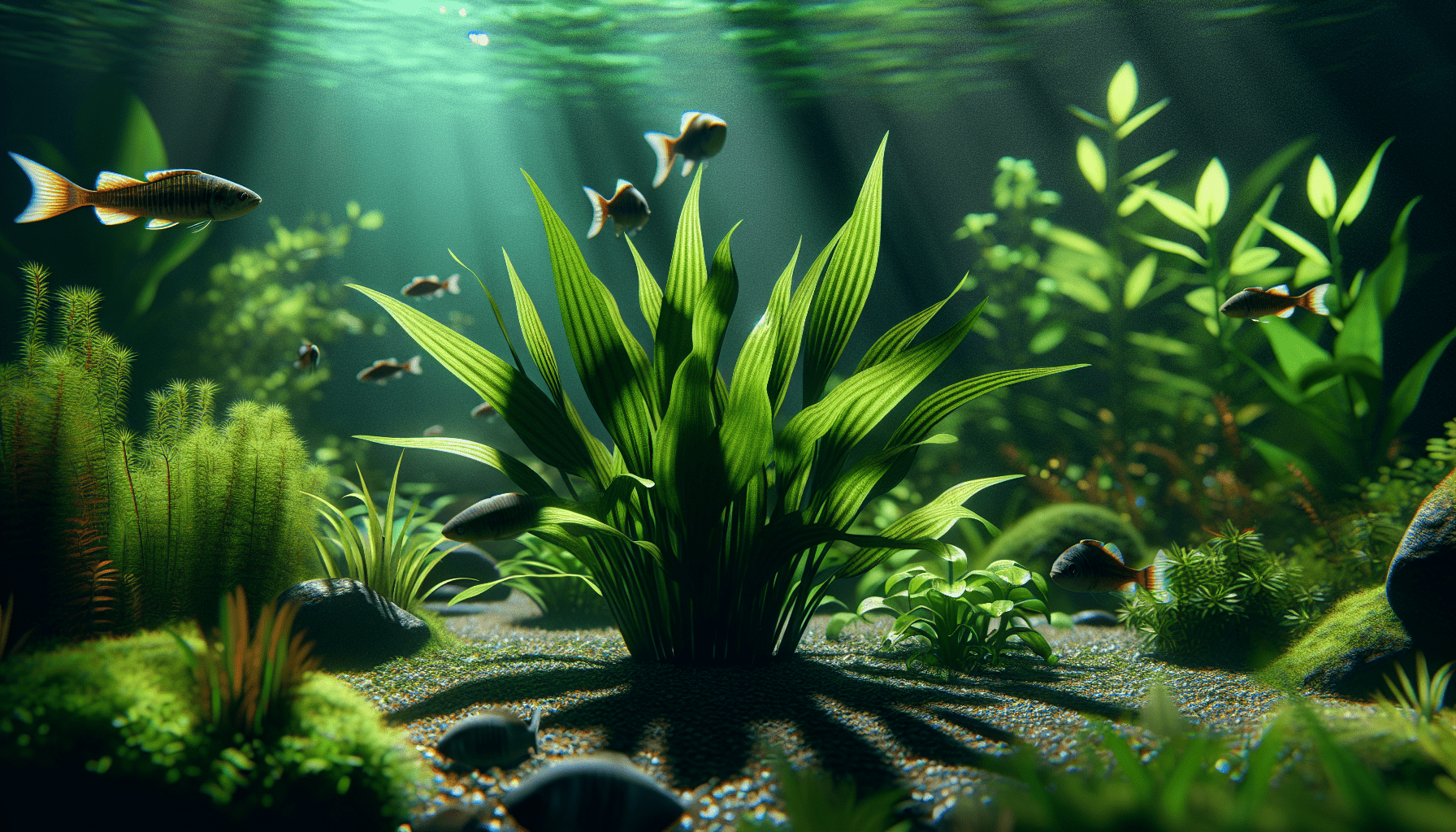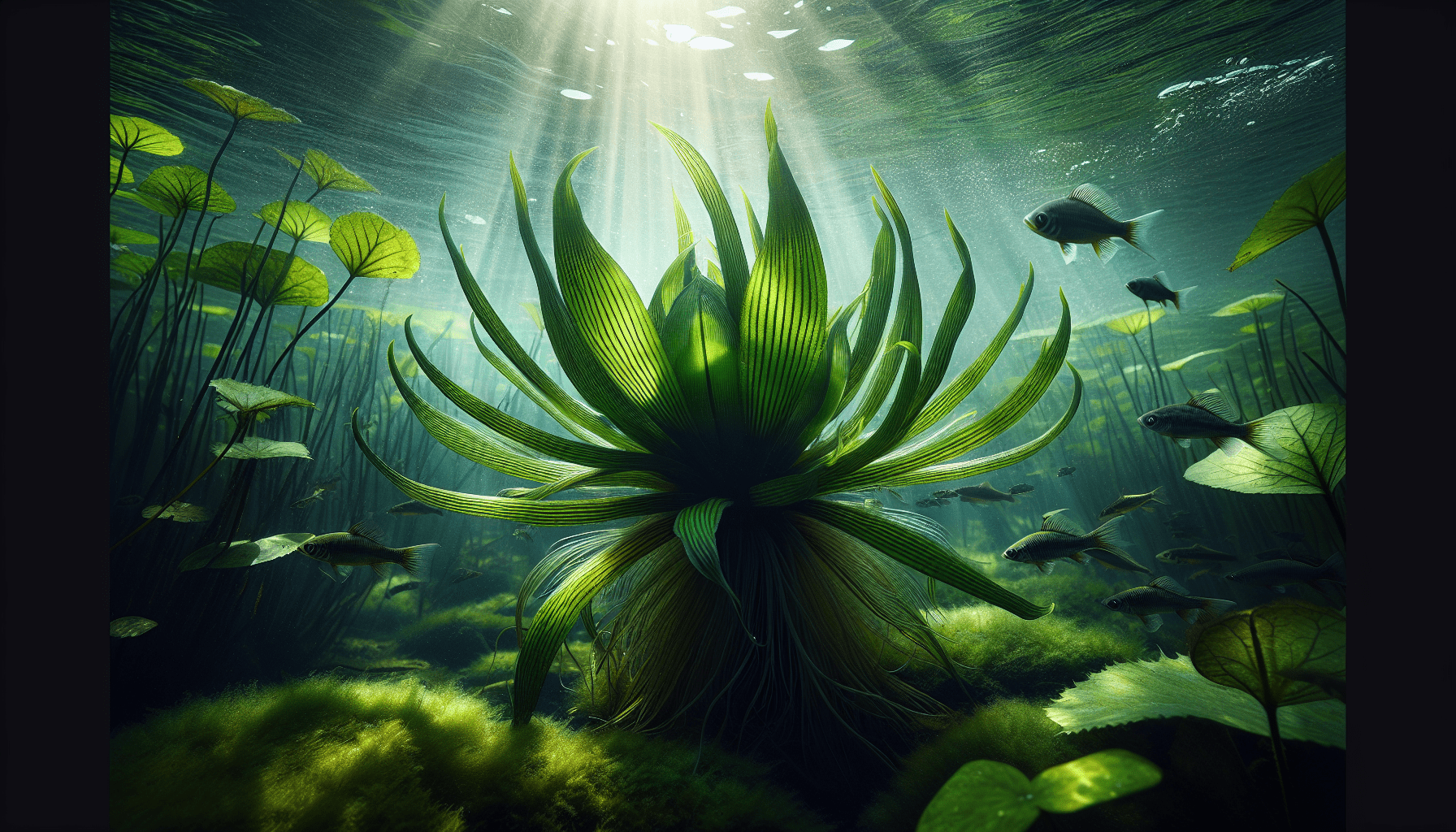As an inquirer in the field of aquatic botany, you might be familiar with the term ‘Aponogeton Lakhonensis’, but perhaps you remain unclear about the ins-and-outs of this aquatic flora species. This article serves to enhance your comprehension, providing an in-depth exploration of the Aponogeton Lakhonensis – a plant known primarily as an aquatic weed – highlighting its specific characteristics, habitat, and overall significance in the ecosystem. Brace yourself for a stimulating journey into the world of aquatic plants, framing your understanding of this unique species in a whole new light.
Basic Description of Aponogeton Lakhonensis
This article explores the Aponogeton Lakhonensis, an unusual and fascinating underwater plant species.
Scientific classification and name origin
Aponogeton Lakhonensis is a classification under the family Aponogetonaceae, which comprises about 56 species, predominantly from the tropical and temperate waters of Africa, Asia, and Australasia. The Aponogeton nomenclature, derived from Greek, means ‘living in waters’. The specific term ‘Lakhonensis’ comes from ‘Lakhon’, denoting the Lakhon region of Northeastern Thailand.
Physical characteristics
Aponogeton Lakhonensis, distinguished for its light-green translucent leaves, grows underwater from a small rhizome. This perennial aquatic plant typically possesses lanceolate or oval-shaped leaves, which can grow to be over 30 centimeters long and about 4 centimeters wide.
Where it is typically found in nature
It is usually found in freshwater bodies such as rivers, streams, ponds, and marshes, especially in the Northeastern part of Thailand and various other southeast Asian countries such as Vietnam and Cambodia.
Growth and Development of Aponogeton Lakhonensis
Lifecycle stages
The Aponogeton Lakhonensis has a fascinating life cycle that starts with the germination of a seedling from the parent plant’s seed. The plant then grows, produces flowers, sets seeds and finally withers away, reinitiating the cycle. Like other Aponogeton species, it also reduces its metabolic activity during unfavorable periods in a stage known as ‘dormancy.’
Breeding season and processes
The breeding season of Aponogeton Lakhonensis is typically during the early wet season. Propagation is primarily sexual, through seeds. The plant flowers underwater, yielding seeds that fall and germinate on the riverbed.
Ideal growth conditions
This plant typically thrives in water bodies with a temperature range from 22°C to 28°C and a pH range between 5.5 and 7.5. It prefers substrates of silt or mud with a good supply of nutrients.
Common factors influencing growth and development
Several elements influence the growth and development of Aponogeton Lakhonensis. These factors include water temperature, pH, light conditions, nutrient availability, and the presence of other competing plant species.

Ecological Impact of Aponogeton Lakhonensis
Role in the ecosystem
Aponogeton Lakhonensis plays a significant role in its ecosystem. Its roots act as a stabilizer for the riverbed, while its leaves provide shelter for many aquatic animals. The plant is also a substantial oxygen provider while filtering out pollutants from the water.
Interactions with other forms of aquatic life
Aponogeton Lakhonensis coexists with a rich variety of aquatic life, from phytoplankton and zooplankton to various amphibians, insects, and fish species. These organisms partake in symbiotic relationships that allow for the mutual survival and thriving of all.
Potential environmental hazards
Despite its benefits, an uncontrolled growth of Aponogeton Lakhonensis can lead to problems. Overpopulated patches of this plant can obstruct waterways, hinder aquatic life, and affect activities such as fishing or boating.
Nutritional Value of Aponogeton Lakhonensis
Nutrient composition
This plant has a diverse nutrient composition that includes vitamins (especially vitamin C), minerals, dietary fibers, and essential bioactive compounds vital for body functions.
Whether it is edible for humans
Even though the Aponogeton Lakhonensis is not known for human consumption, it is essential to point out that many Aponogeton plants are edible and form part of the diet in some cultures.
Use as a food source for aquatic creatures
Aponogeton Lakhonensis finds extensive use as a food source for various aquatic creatures. Its leaves are a food source for herbivorous aquatic creatures such as freshwater snails, while its seeds provide sustenance for a multitude of fish species.

Health Implications of Aponogeton Lakhonensis
Potential benefits for human health
Although not generally consumed by people, some benefits might be derived from the plant due to its nutrient composition. However, more research is needed to unearth these benefits.
Potential risks and side effects
While quite benign in its natural habitat, consuming Aponogeton species raw or improperly cooked can result in stomach discomfort due to the presence of certain anti-nutritional components such as oxalates. Hence, if consumed, precautions should be taken.
Use in traditional and modern medicine
There is limited information available regarding the utilization of Aponogeton Lakhonensis for medicinal purposes. However, in many traditional practices, different Aponogeton species boast a history of use as herbal remedies for ailments like skin conditions and digestive issues.
Aponogeton Lakhonensis as an Aquatic Ornamental Plant
Popularity in aquascaping
Aponogeton Lakhonensis is a popular choice in aquascaping, the craft of arranging aquatic plants and other elements in an aquarium in an aesthetically pleasing manner. This plant’s delicate, translucent leaves and fast growth make it an attractive choice for aquarists.
Ideal conditions for maintaining in aquariums or ponds
To maintain this plant in aquariums or ponds, the temperature should be between 22°C to 28°C and the pH between 5.5 and 7.5. The plant also requires an adequate supply of light and nutrients for growth.
Tips for planting and cultivation indoors
To cultivate Aponogeton Lakhonensis indoors, place it in a tank with substrate rich in nutrients. Settling the plant in groups gives the best ornamental effect. Also, due to its fast growth, regular trimmings will be necessary to control its size.
Commercial Uses of Aponogeton Lakhonensis
Cultivation for sale
This plant is often commercially cultivated for sale to aquarium enthusiasts. Considering its popularity, the cultivation of Aponogeton Lakhonensis can be an economically viable endeavor.
Uses in products or industries
While the Aponogeton Lakhonensis does not have widespread industrial use, it is frequently used in ornamental aquaculture industry, contributing to the aesthetic appeal of aquariums and ponds.
Potential economic value
Despite being primarily classified as an ornamental species, the economic value of Aponogeton Lakhonensis can be enhanced with more research into its nutritional and medicinal properties.
Conservation Status of Aponogeton Lakhonensis
Current conservation status
Currently, the conservation status of Aponogeton Lakhonensis is relatively undetermined. Given its localized range and the paucity of available information, it may fall under the ‘Data Deficient’ category by IUCN standards.
Threats to survival in the wild
One of the significant threats to Aponogeton Lakhonensis in the wild is habitat loss due to urbanization and land conversion for agriculture. The introduction of invasive plant species can also disrupt the balance of their ecosystem.
Conservation strategies and efforts
Efforts to conserve Aponogeton Lakhonensis should focus on preserving its natural habitats and controlling the spread of invading plant species. Also, more research needs to be conducted to form effective conservation strategies.
Research and Studies on Aponogeton Lakhonensis
Notable research findings
Research on Aponogeton Lakhonensis remains limited, but studies performed on the species have confirmed its ornamental value and potential as an oxygenator in water bodies.
Gaps in existing knowledge
There remains much to be explored regarding the plant’s ecological role, medicinal possibilities, and conservational needs. Only through extensive research and study can these aspects be unraveled.
Future directions for research
Future research should focus on understanding the plant’s environmental role better, the potential health benefits and risks associated with its consumption, and the development of efficient conservation strategies.
Miscellaneous Information on Aponogeton Lakhonensis
Common myths or misunderstandings
A common misunderstanding about Aponogeton plants, including Lakhonensis, is that they are challenging to grow. On the contrary, they are relatively easy to cultivate with the right growth conditions.
Interesting facts
A unique characteristic of Aponogeton Lakhonensis, and many others in its genus, is the ability to bloom underwater – a trait not observed in many aquatic plants.
Role in culture, traditions, or history
While Aponogeton Lakhonensis does not have a specified role in cultural traditions or history, various other Aponogeton species are used as food or in traditional medicine in different cultures.